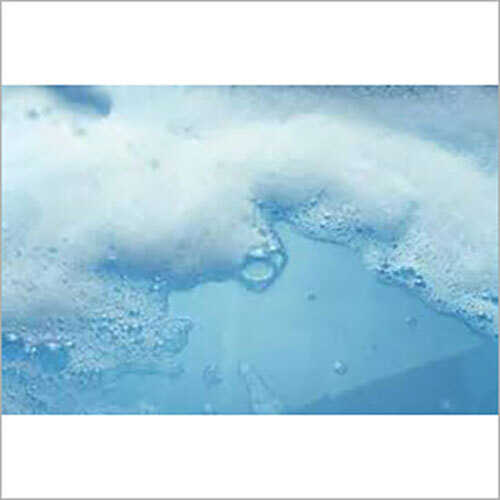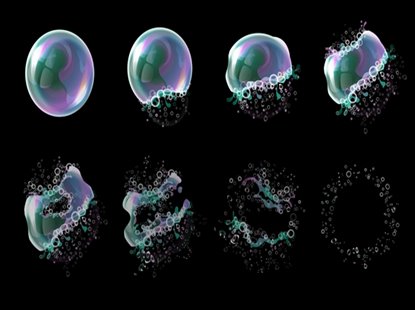How Defoamers Enhance Efficiency in Manufacturing and Production
Choosing the Right Defoamer for Your Particular Application Requirements
Picking the ideal defoamer for details application requirements is a nuanced process that demands mindful factor to consider of several elements, such as the foam type, tool, and operating problems. Recognizing the subtleties of defoamer performance-- including rate and determination-- while likewise accounting for environmental and regulatory variables is critical.
Comprehending Foam Formation
Foam formation happens when gas is trapped within a fluid, producing a stable framework of bubbles. This sensation can dramatically influence different commercial processes, specifically in markets such as food production, drugs, and wastewater treatment. The visibility of foam can impede mixing, lower product quality, and also lead to operational ineffectiveness.
Foam generally develops as a result of a combination of factors, including surface-active representatives, anxiety, and the attributes of the liquid stage. Surfactants lower the surface stress of the fluid, helping with the development of bubbles that can support and integrate. Agitation, whether from mechanical stirring or gas introduction, enhances bubble development, resulting in enhanced foam volume.
Recognizing the auto mechanics of foam formation is vital for sectors intending to enhance their procedures. By recognizing the details conditions that advertise foam generation, organizations can apply strategies to mitigate its effects.
Kinds Of Defoamers Available
Various sorts of defoamers are offered to deal with the obstacles positioned by foam in industrial applications. defoamers. Broadly identified, defoamers drop right into 3 categories: silicone-based, non-silicone-based, and all-natural defoamers
Silicone-based defoamers are renowned for their performance and security throughout a large range of temperatures and pH degrees. They are usually utilized in applications where solid foam suppression is needed, such as in adhesives, paints, and coatings. Their low surface area tension enables rapid foam collapse.
Non-silicone-based defoamers, typically made from organic substances, use an option for applications delicate to silicone deposits. These defoamers can be more split right into polyether and ester types, each tailored to meet certain formulation requirements. Non-silicone defoamers are frequently used in food processing and personal care products due to their compatibility with numerous formulas.
All-natural defoamers, originated from plant or animal sources, are acquiring grip due to their eco-friendly account. These items are especially appealing in applications where governing compliance and sustainability are paramount, such as in agrochemicals and biotechnology.
Choosing the ideal sort of defoamer is vital for optimizing performance and ensuring compatibility with certain applications.
Key Application Considerations
When selecting a defoamer, it is important to think about the certain application demands to ensure optimum performance. defoamers. Different markets have unique demands, such as food processing, drugs, or wastewater treatment, and each application might call for one-of-a-kind defoaming residential properties
Trick factors to assess include the medium in which the defoamer will be utilized, whether it is water-based, oil-based, or a mix thereof. The temperature and pH levels of the application can likewise considerably affect the efficiency of a defoamer. Furthermore, compatibility More about the author with various other chemicals existing in the system is critical to avoid unfavorable reactions that can endanger performance.
One more crucial consideration is the foaming behavior of the specific system. Understanding whether the foam forms quickly or gradually can lead the option of a defoamer that targets the source effectively. The desired rate of defoaming can affect the option, as some applications require fast activity while others may tolerate slower defoaming procedures.
Last but not least, regulative and environmental factors to consider should not be ignored, particularly in markets with rigorous compliance demands. Picking a defoamer that aligns with these aspects makes certain both effectiveness and safety and security in the application.
Efficiency Screening Techniques
Assessing the performance of a defoamer requires a methodical technique to screening that properly determines its performance in particular applications. Various efficiency screening techniques can be used to establish the optimal defoamer for a provided formulation.
One common approach is the bubble test, which reviews the defoamer's ability to decrease foam volume over time. This examination entails creating a secure foam and then adding the defoamer to observe the price of foam collapse.

Ultimately, choosing the appropriate performance screening approach depends on the details application and the sort of foam being resolved. Each approach supplies beneficial data that can assist formula adjustments and improve the effectiveness of the defoamer in practical applications.
Ideal Practices for Choice


Following, consider the defoamer's performance in regards to speed of activity see this site and determination. A quick-acting defoamer may be essential for procedures where fast foam suppression is critical, while an extra relentless formula may be needed for long term foam control. Furthermore, examine the environmental effect of the defoamer, including its biodegradability and any governing conformity needs.
Conduct trials with picked defoamers to determine their effectiveness in real-world conditions. By adhering to these best methods, you can improve foam control effectiveness and make sure the long life of your procedures.
Verdict
In summary, choosing the appropriate defoamer necessitates a thorough assessment of numerous elements, consisting of foam kind, medium, operating conditions, and environmental considerations. Understanding the distinct attributes of foam formation and the offered defoamer choices is crucial. In addition, using check this reliable efficiency screening approaches and sticking to finest techniques throughout the selection process will boost the possibility of accomplishing optimum defoaming results. Ultimately, an educated choice method will attend to certain application requirements and minimize frothing obstacles properly.
Choosing the ideal defoamer for details application demands is a nuanced process that demands careful consideration of several factors, such as the foam medium, operating, and type conditions.Picking the ideal defoamer is important for accomplishing optimal efficiency in foam control applications. A quick-acting defoamer might be required for procedures where rapid foam reductions is crucial, while an extra relentless solution may be needed for prolonged foam control.In recap, selecting the suitable defoamer necessitates an extensive assessment of numerous variables, including foam kind, tool, operating problems, and ecological considerations. Comprehending the one-of-a-kind qualities of foam formation and the offered defoamer alternatives is important.